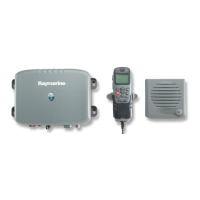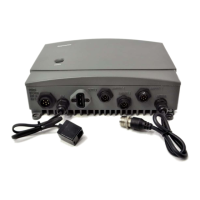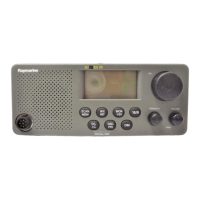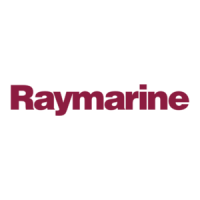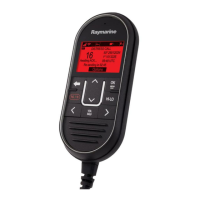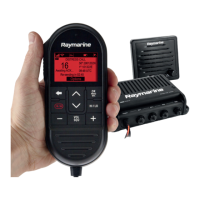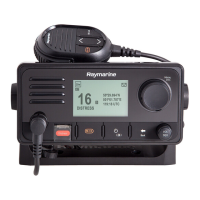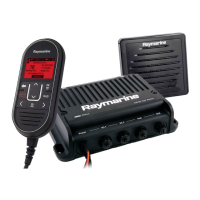52 Ray240 User Manual
How do I connect the cables to the transceiver?
You connect the cables to the labelled connectors as follows:
How do I connect the handset to the transceiver?
You should connect the handset cable to the transceiver using the bulkhead
mounted connector. Full details of which are shown on the Installation Guide.
3.7 How do I get position data?
You can get position data for providing latitude and longitude information using
either NMEA or SeaTalk connections.
SeaTalk data
If you have a SeaTalk instruments installed, this is the most convenient way to
connect your radio for position data to be received. Using the SeaTalk Auxiliary
Junction Box, Part No. R55006 (not supplied), enables Sea Talk and Global
Positioning System (GPS) inputs to be connected in one place.
NMEA data
You should connect the White and Blue (NMEA + and -) wires of the combined
cable to the input wires of the positioning device using a suitable connector block.
The following sentences are used by the Ray240:
Received - GGA, GLL, RMC, ZDA.
For specific instructions on how to connect your particular GPS, refer to the
handbook which came with that device.
Power
Handset
Antenna
D6827_1
Position data input
